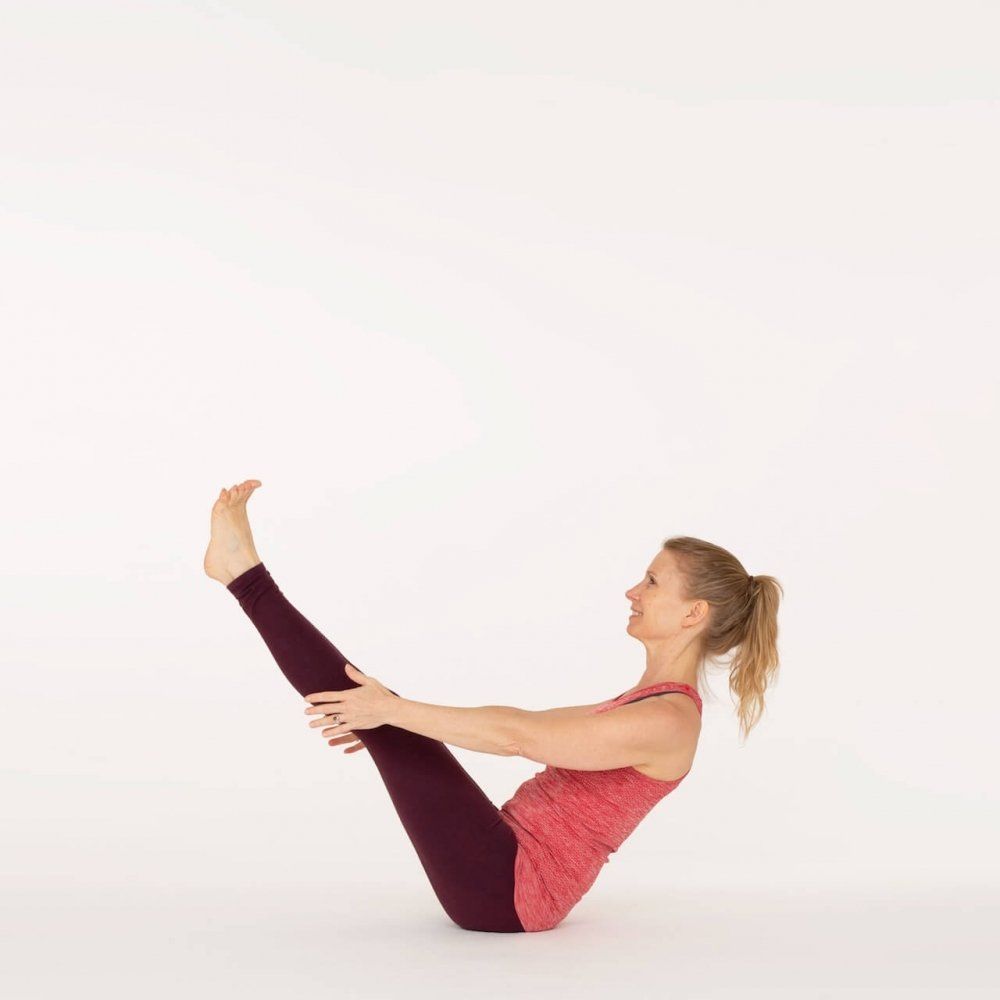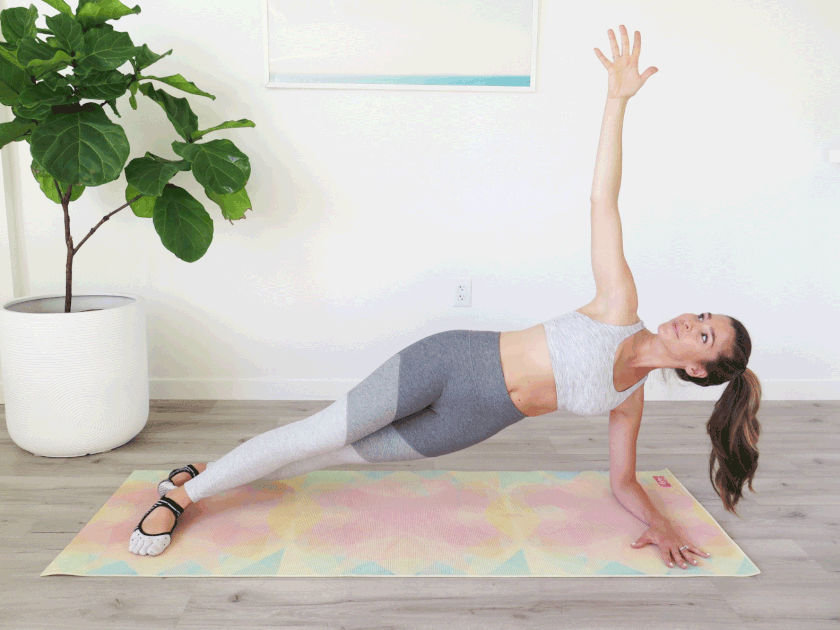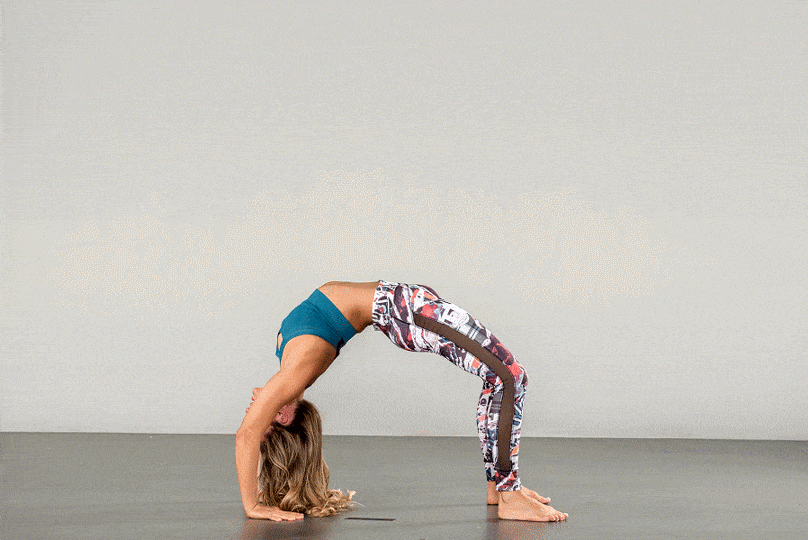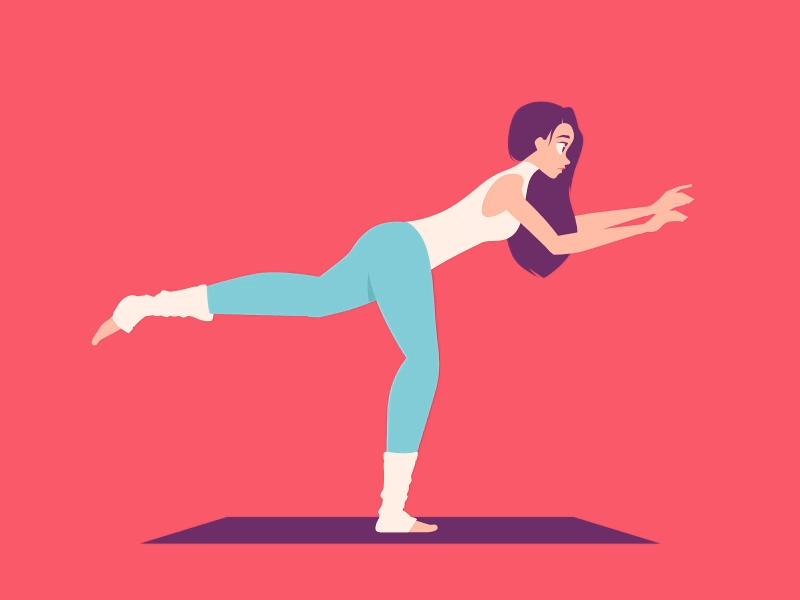9 ASANAS TO STRENGTHEN YOUR CORE
You don't have to just go to the gym to strengthen your core muscles. Yoga is a very good tool to access for improving the strength in your abs and back. You may think of yoga classes as slow and meditative or involving fluid movements from pose to pose. But there are individual yoga postures you can practice to stimulate the energy, growth, and strength in your core.
1.BOAT POSE
A standard yoga pose that can build core strength is Boat Pose. It is a stationery posture that improves stability and mobility. Start this yoga pose seated with your legs extended out in front of you. Sit up tall to lengthen your spine then slowly lean back while bending your knees. Keep leaning back until you're able to lift your feet off the floor. Flex your feet to keep your legs activated. If needed, hold onto your bent knees with your hands to maintain the lengthening in your spine. Boat Pose is a V-shape, typically practiced with legs and arms fully extended. But this version is quite effective and is a good starting point. Hold the posture while taking deep breaths. Breathing is key to this pose and most yoga postures. Inhale to maintain the length in your back. Feel the breath rise to fill up your lungs. When you exhale, engage your abdominal muscles. It secures the posture and it starts the strengthening process. Hold the pose for 10 to 20 breaths. Take a break and repeat the posture two more times.

2.SIDE PLANK POSE
This is another basic posture that features a static hold to build endurance strength in your core body. It is a sideways position that targets your obliques. Start the posture in a high push-up position. While keeping your right hand on the floor, swing your entire body sideways facing the left wall. Keep your legs very straight; to do so, flex your feet. As you're able, stack one leg on top of the other. If you need more stability, place one foot in front of the other. For further stability in this posture if you’re just beginning, place your right knee on the ground directly under your hip. Extend your left arm into the air, slightly lift your left hip toward the ceiling, and breathe deeply. Hold the posture for 5 to 10 breaths. Feel free to rest and perform the posture on the same side two more times. When complete, practice the pose on the other side.

3.SIDE PLANK WITH A TWIST
Holding Side Plank creates stability, and when you add motion, you put those now stronger muscles into functional action. While in a Side Plank Pose with your right hand on the floor, inhale to open the body more with your left arm in the air. As you exhale, rotate the trunk of your body to reach your left arm underneath you toward the opposite wall. Inhale again to re-open the body. Exhale to repeat the twist. Your obliques allow you to effectively rotate your torso. As you're able, rotate your body 3 to 10 times depending on your ability. Repeat the sequence on the other side.

4.DOLPHIN PLANK POSE
Start this pose on your hands and knees. Slowly lower both elbows one at a time to the floor. As you're able, keep your arms parallel with one another. You can also have the hands closer together, creating more of a triangle-shape with your arms on the ground. Next, curl your toes, and lift your knees off the floor. Re-position yourself so that your entire body is long and flat like a low coffee table. This is another stabilizing posture, but you may find that the abdominal muscles activate more in this pose compared to a regular Plank Pose. Hold the posture for 15 to 30 seconds. Rest, then repeat the pose two more times.

5.BRIDGE POSE
Not only do you want to focus on your abdominal muscles when strengthening your core. It is important to concentrate on your back, too. Here are a couple of yoga backbends that you can practice, starting with Bridge Pose. Start this posture lying on your back with your knees bent, feet flat on the floor. You want to align your knees so they are directly over your ankles or heels for good leverage. When you exhale, press your feet firmly into the floor to lift your hips off the ground. Bend your arms at 90 degrees to press the backs of your arms down into the floor to further lift your upper body. You will form a mild yoga backbend that opens the whole front side of your body. As you breathe in and out, sustain the position. Holding it will strengthen the muscles in your back, particularly the erector muscles that support your spine. Even more specifically, Bridge Pose targets your low back region. Hold the posture for 10 to 20 breaths.

6.WHEEL POSE
This is considered a "full" backbend which can be performed after you've warmed up with Bridge Pose. It will target your entire back; a considerable part of your core system. As with Bridge Pose, start lying on the floor with your knees bent. Place your hands up by your shoulders, but slight wider than shoulder distance for good alignment and leverage. With a strong exhale, press your feet and hands firmly into the floor to lift your entire body into the air. This is a dynamic posture. If you're unable to move up into this position, stay with bridge pose; both have core strengthening benefits.

7. REED POSE
It is a basic posture, but brings good attention to your core region. Start in a standing position with your feet about hip distance apart and your toes pointing forward. Extend your arms into the air and interlace your fingers. As you inhale, reach toward the ceiling; as you exhale laterally lean to your ride side. This will lengthen your left side while "crunching" on the right. Inhale to come back up to center. Exhale to the left side. Hold each side for a few seconds before moving to the other. You can perform 5 to 10 reps on each side.

8.CHAIR POSE WITH A TWIST
Another way to work your front and side abs is to perform Chair Pose with a twist. This stabilizing posture is good for beginners as it brings strength and stability to your core system. Start this yoga pose in a standing position. Inhale to extend your arms into the air. Exhale to sit back as if you're sitting into an imaginary chair behind you. Bring your hands to a prayer position at your chest. Maintain a strong stance with your feet firm on the floor and your hips aligned. Inhale to create more length in your spine. Exhale to rotate your torso slightly to the right. You do not need to twist too far to gain the rewards of this position. Hold for 5 to 10 breaths before returning to neutral. Performs the pose on the other side. These next two postures will make you feel very strong. They are standing stabilizing postures that activate your entire core system.

9.VICTORIOUS WARRIOR POSE
This first pose, "Victorious" Warrior is a variation of typical yoga posture called Side Angle Pose. Come to a Warrior 2 Posture. Your right foot will be forward with a bent knee while your left leg is straight behind you with your foot flat on the floor. You'll be in a lunging position with your torso facing the left wall. Extend your arms outward over your legs parallel to the floor. Reach outward with your right arm to angle the upper half of your body. Hold this position. Bring your left arm up and over until your arms are extended overhead creating a V-shape. Keep your torso open to the left wall. By staying sideways with arms reaching outward, you will automatically engage your entire core system to hold the pose. Breathe deeply; focus on the exhales to accentuate the abdominal contractions. Hold for 30 seconds before returning to neutral. Perform this posture two more times before repeating the sequence on the other side.

